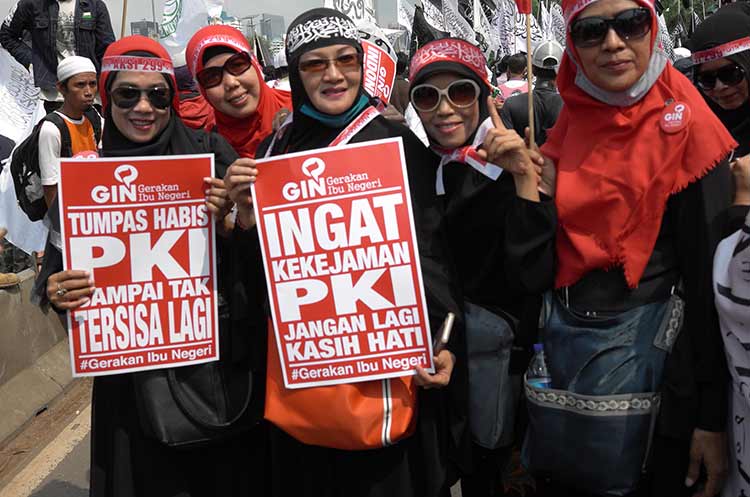
On the night of October 1 at least 125 people died in a football stadium in Malang, East Java (Indonesia) in an entirely avoidable mishap. When the home team lost there was a rush of frustrated spectators, a situation that could have been controlled. However when the police over-reacted with excessive use of tear gas shells and batons, a big stampeded ensued. This together with several exit points being locked resulted in so many avoidable deaths, including those of several small children.
This tragedy brought back memories of the Accra Stadium (Ghana) tragedy of 2001 in which 126 persons died. Here too there was excessive use of tear gas shells followed by a stampede. Despite this, suggested restrictions on use of tear gas shells in sports stadiums have not been observed.
In Hillsborough stadium (UK) disaster, overcrowded, fenced in conditions along with other factors led to a big tragedy. In another football stadium in Guatemala, spectators tumbled down the stairs, leading to 82 deaths. The Basta Stadium Tragedy ( France) in 1992 led to 18 deaths and as many as 2300 injured. In the Dashrath stadium ( Nepal) tragedy as many as 90 perished.
A review of such sports stadium mishaps reveals that a better preparation of crowd control ( instead of relying merely on use of force), better safety planning and audits as well as ensuring the opening of many exit points with clear indications for this can help to reduce the possibility of such tragedies.
In addition there is the wider question of reducing mishaps and accidents at other large gatherings of people such as at fairs, festivals, big celebrations, pilgrimages, entertainment and tourism events. On average every year these lead to thousands of deaths and serious injuries. The damage caused by a large number of such tragedies which are smaller ones is often not even counted in such estimates.
Some of the most tragic accidents have taken place at the time of pilgrimages, religious fairs and other gatherings of large numbers of people, for religious or other events. As India has a very large number of religious fairs and special occasions for large gatherings of pilgrims, such accidents have been reported with tragic regularity from various parts of the country, as is evident from the following information.
Deaths Year Place Crowd
800 1954 Kumbh Mela, Allahabad, UP 50 lakh
258 2005 Mandhar Devi Temple, Wai, Maharashtra 4 lakh
249 2008 Chamunda Temple, Jodhpur, Rajasthan 25,000
163 2008 Naina Devi Temple, Himachal 10,000
115 2013 Navratri, Ratangarh Mata Temple, MP –
102 2011 Sabarimala Temple, Kerala –
According to a study of stampedes by the National Crime Research Bureau, religious gatherings and pilgrimages have been venues for 79% of stampedes, testifying to the need for better safety planning for such events.
In the case of pilgrimage sites located in high risk zones the risks for pilgrims have been increasing in recent years. In particular a large number of pilgrims have died in mishaps and disasters in the Himalayan region and its foothills in recent times.
At world level, the biggest concern for safety has been expressed in the context of Haj pilgrimages. Several serious accidents have claimed the lives or caused serious injuries to thousands of pilgrims in recent years. Several experts have pointed out that most of these lives could have been saved by better safety planning and management on the part of the authorities.
>> September 2015- Crane crashes into the Grand Mosque, 111 killed. -About 800 pilgrims die on September 24 mainly in stampedes
>> January 2006- 362 crushed to death at the Jamarat Bridge during the stoning ritual.
>> February 2004- Stampede kills 251 near the Jamarat Bridge.
>> April 1998- 119 pilgrims are crushed to death in Saudi Arabia at the Haj.
>> April 1997- 343 pilgrims are killed in a tent fire at the haj camp at Mina.
>> May 1994- Stampede near Jamarat Bridge in Mina kills 270.
>> July 1990- Inside the al-Muaissem tunnel near Mecca, 1,426 pilgrims are crushed to death.
>> July 1987- Iranian protesters clash with Saudi police, more than 400 Iranian pilgrims die.
>> December 1975- Cooking gas cylinder explodes in tent city, fire kills over 200.
Review of safety measures for this pilgrimage have pointed out that some choke points are very dangerous. Some narrow paths need to be widened to provide more space to pilgrims, but the real estate developers have managed to corner this land for high profit hotels. Madawi at Rasheed, a Saudi anthropologist at the London School of Economics, told The New York Times that members of the Saudi royal family have profited handsomely from real estate development around the two holy cities. “The renovation and expansion are done under the pretext of creating more space for Muslim pilgrims, but it masks land grabs and vast amounts of money being made by the princes and by other Saudis,” she said. “There is no accountability.”
Hasan Saroor ( “Bitter Harvest from Mina”—The Hindu 30 September 2015)wrote “…the Saudis, for all the money spent on organizing the biggest show on earth, have not been great managers. Ask anyone who has been on a Haj- Sunni or Shia- and they will have stories about poor crowd management, inadequate facilities, and police high-handedness. The Saudi government says it has spent more than $ 100 billion to improve facilities but its logistics management on the ground remains inadequate- and frequently fails to rise to the challenge of dealing with the rising number of pilgrims, which this year exceeded two million.” Accounts of various pilgrims have mentioned inadequate provision of safety and medical arrangements, as well as lack of emergency access roads for emergency services to reach pilgrims in distress.
Another area of concern is the entertainment and tourism industry. More than in any other area, there is a tendency to introduce untested novelties to attract more customers and tourists. However if safety tests are ignored, this can prove to be very costly, as was the case with party revelers at a water park near Taipei, in Taiwan. A coloured powder that was splashed on the party crowd turned out to be explosive. There was a lot of blood and fire all around, and over 500 people were seriously injured within a matter of minutes. They had to be admitted to 43 hospitals.
Clearly most of the thousands of people who die or suffer serious injuries in stampedes and mishaps at various crowded events and travel sites every year can be saved from this fate if better safety preparations are made and precautions are taken. In fact many of these events are well funded and there should not be any lack of funds for safety work. It appears that safety aspects have just not been receiving the attention due to them, and it is high time that remedial action is taken.
Bharat Dogra is Honorary Convener, Campaign to Save Earth Now. His recent books include A Day in 2071, Planet in Peril and Man over Machine.













































